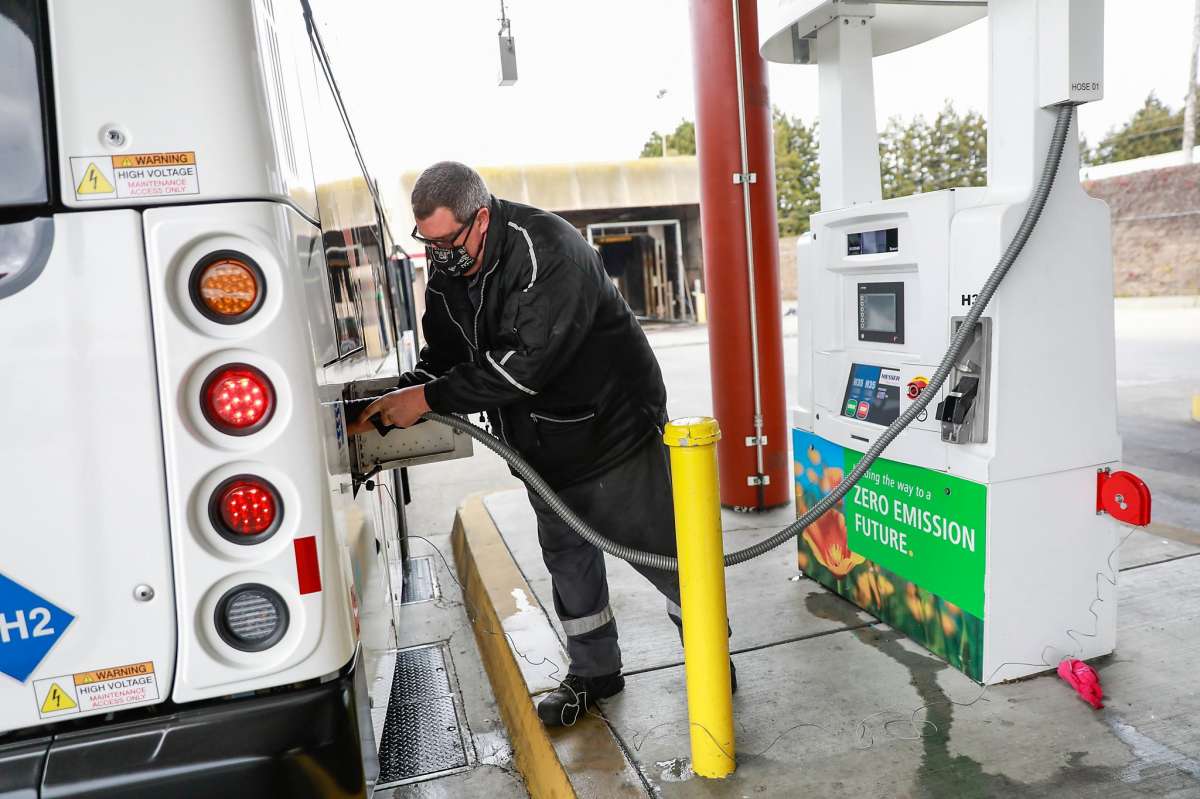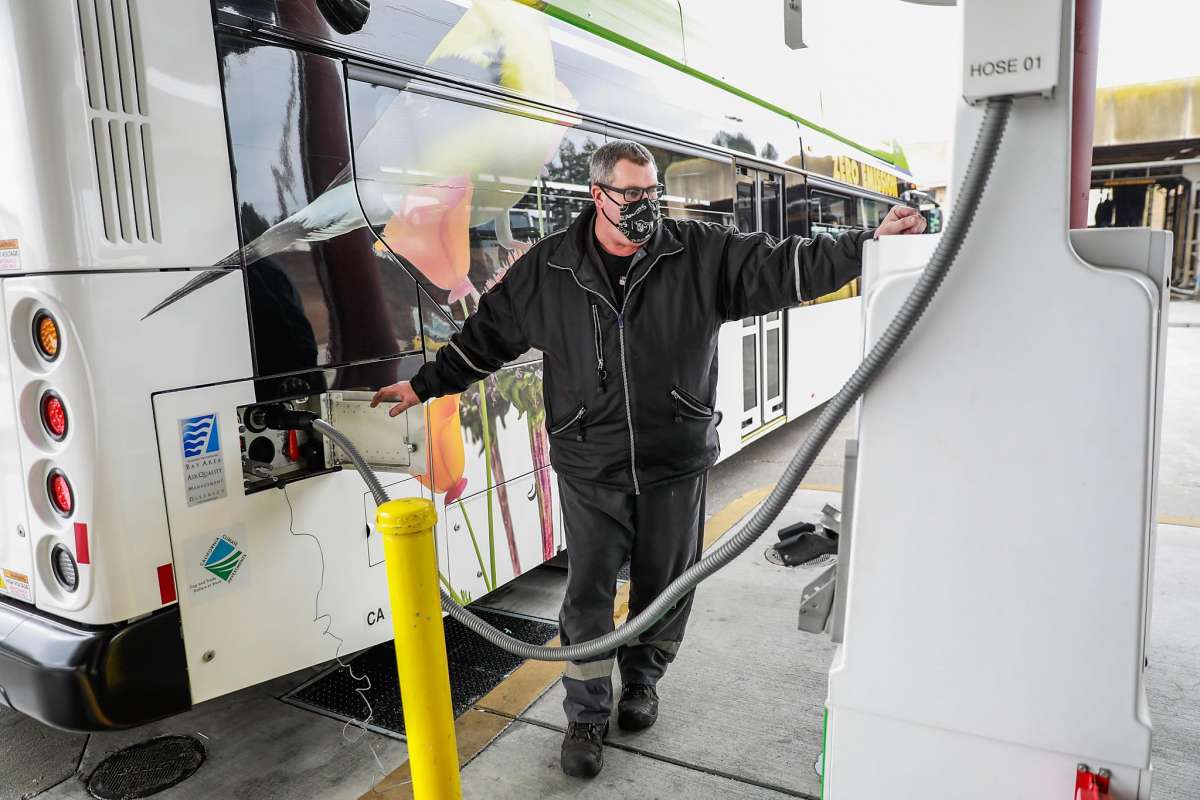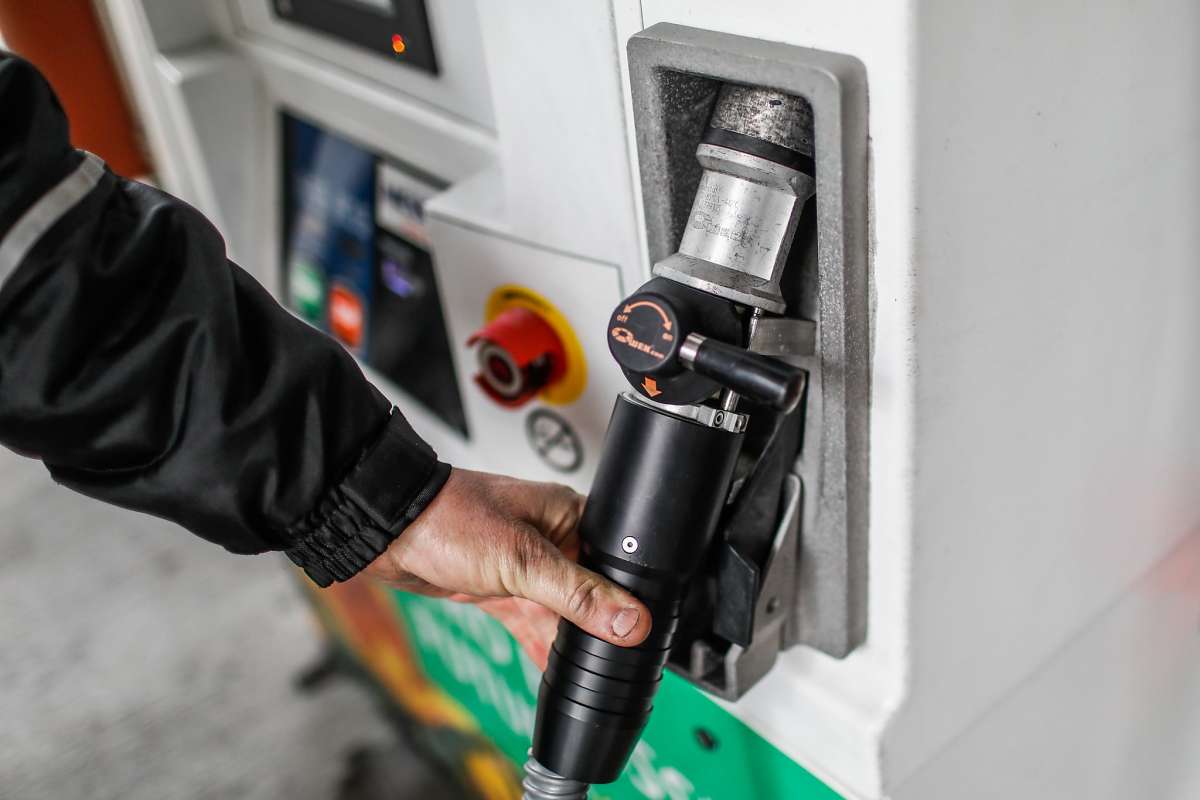SACRAMENTO - No amount of solar panels and wind turbines alone will be enough for California to reach its goal of a clean electrical grid unless the state can solve its energy storage problem.
The state already generates an abundance of energy from wind and solar farms, particularly during the sunny and blustery spring and early summer months. But it loses much of that energy because it has nowhere to store it, and unlike fossil fuels, the sun and wind don't generate power 24 hours a day. Utilities must kick on gas-fired power plants to keep up with California's energy demands during peak demand periods.
Some experts and legislators say the missing puzzle piece could be hydrogen, the most abundant element in the universe, which can be used as a zero-emission fuel for power plants, vehicles and machinery. Extra solar and wind energy can be used to create hydrogen fuel, which can then be stored and used to generate electricity to fill the gaps when the sun doesn't shine and wind doesn't blow.
State Sen. Nancy Skinner, D-Berkeley, is carrying a bill designed to jump-start the movement to green hydrogen by requiring state agencies to factor the fuel into their climate plans.
"Solar is great, but solar is only produced when the sun is shining," Skinner said. "In a perfect world, hydrogen is one of the absolute best fuels. Many of our other carbon-free energy sources have some limitations that hydrogen does not have."
Hydrogen gas can be used to fuel power plants using several methods. One option involves a fuel cell, which combines hydrogen and oxygen from the air to create an electrochemical reaction that produces electricity. Energy companies say hydrogen could also be used to power turbines that generate electricity, much like natural gas.
But hydrogen also has its downsides. Today, the vast majority of it is produced using fossil fuels, which creates greenhouse gas emissions that drive climate change.

A maintenance worker prepares to fill up an AC Transit bus with hydrogen fuel in Emeryville. Gabrielle Lurie / The Chronicle
The state already generates an abundance of energy from wind and solar farms, particularly during the sunny and blustery spring and early summer months. But it loses much of that energy because it has nowhere to store it, and unlike fossil fuels, the sun and wind don't generate power 24 hours a day. Utilities must kick on gas-fired power plants to keep up with California's energy demands during peak demand periods.
Some experts and legislators say the missing puzzle piece could be hydrogen, the most abundant element in the universe, which can be used as a zero-emission fuel for power plants, vehicles and machinery. Extra solar and wind energy can be used to create hydrogen fuel, which can then be stored and used to generate electricity to fill the gaps when the sun doesn't shine and wind doesn't blow.
State Sen. Nancy Skinner, D-Berkeley, is carrying a bill designed to jump-start the movement to green hydrogen by requiring state agencies to factor the fuel into their climate plans.
"Solar is great, but solar is only produced when the sun is shining," Skinner said. "In a perfect world, hydrogen is one of the absolute best fuels. Many of our other carbon-free energy sources have some limitations that hydrogen does not have."
Hydrogen gas can be used to fuel power plants using several methods. One option involves a fuel cell, which combines hydrogen and oxygen from the air to create an electrochemical reaction that produces electricity. Energy companies say hydrogen could also be used to power turbines that generate electricity, much like natural gas.
But hydrogen also has its downsides. Today, the vast majority of it is produced using fossil fuels, which creates greenhouse gas emissions that drive climate change.

A maintenance worker prepares to fill up an AC Transit bus with hydrogen fuel in Emeryville. Gabrielle Lurie / The Chronicle
Skinner's bill, SB18, specifies that the state's climate and electrical grid plans include "green hydrogen," or hydrogen gas that is produced using electricity from renewable sources, such as solar and wind.
Renewable energy experts say her bill could nudge companies and utilities to invest in the technology. They warn that time is running out to meet the state's goal of switching to a carbon-free electrical grid by 2045.
In 2020, California lost about 1,587 gigawatt-hours in renewable energy because solar and wind farms generated more power than the grid needed at the time. The lost energy would be enough to power roughly 244,230 homes for a year, if it could be stored for when the state needs it.
When California has excess renewable energy
Last year, California lost more than 1,587 gigawatts of solar and wind power because it had nowhere to store the excess energy. Most of the energy was lost in the spring, when the state often must reduce output from renewable power sources to avoid overwhelming the grid.
Source: California Independent System Operator
"It's a tragedy," said Janice Lin, founder of the Green Hydrogen Coalition, which advocates for increased use of the fuel. "Hydrogen enables us to literally bottle really large amounts of sunshine and wind, and you can use the electric grid and the gas grid to move that around."
California suffered through two days of blackouts last summer during a heat wave. The state had failed to plan properly for widespread high demand, particularly in the evenings as solar panels went offline. At the time, Gov. Gavin Newsom said the problem was a shortage of battery capacity to store solar and wind power.
Energy experts say more batteries are still needed, because they can most efficiently store and discharge energy over short periods. But batteries alone won't solve the seasonal storage problem.
Jack Brouwer, a professor of mechanical and aerospace engineering at UC Irvine and director of the National Fuel Cell Research Center, said hydrogen is more effective for longer storage because it doesn't lose energy over time and can be stored underground easily and cheaply.
"It's the only known zero-emissions ... solution for enabling this massive and long-duration storage on the grid," he said. "Eventually, we can't keep installing more and more batteries and make it through the year."

